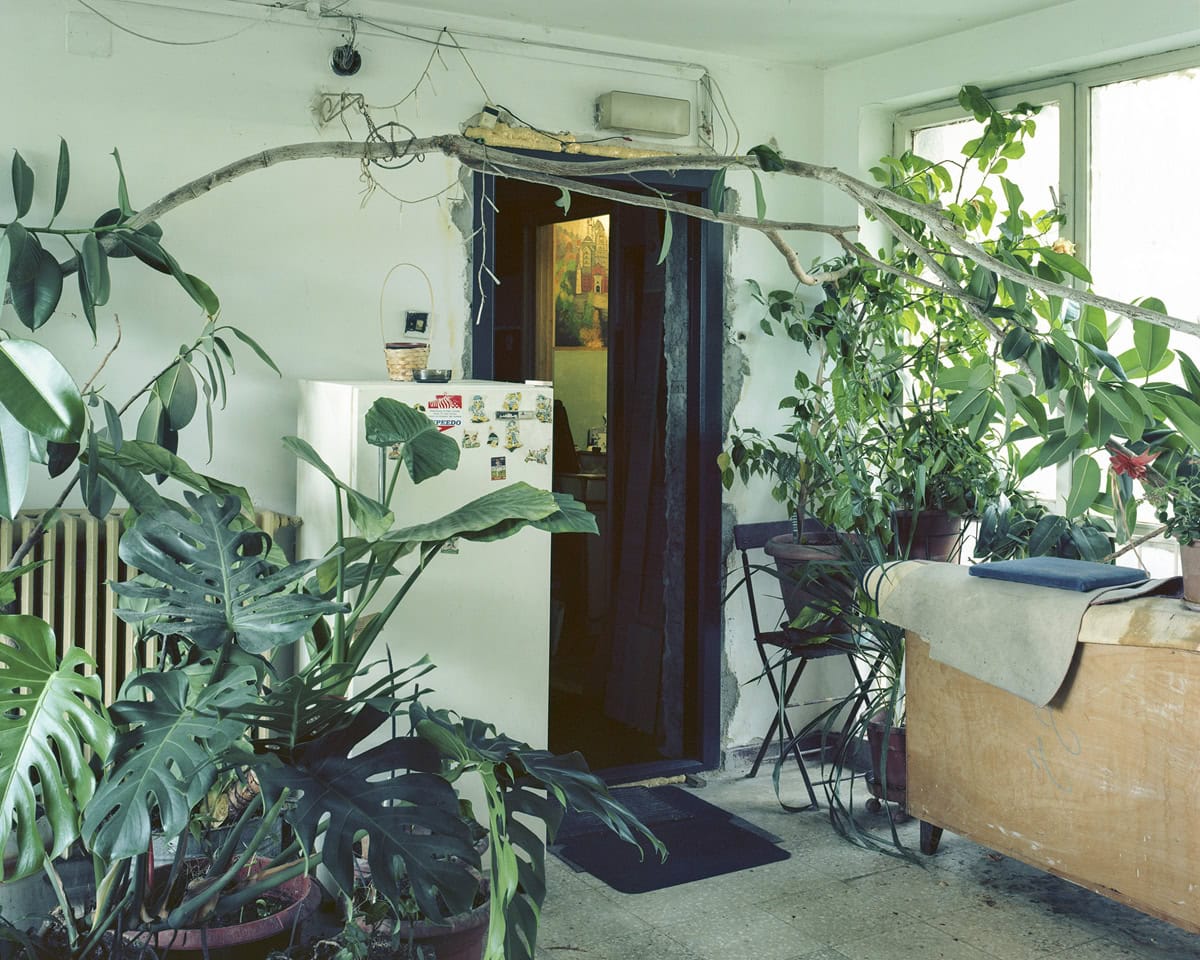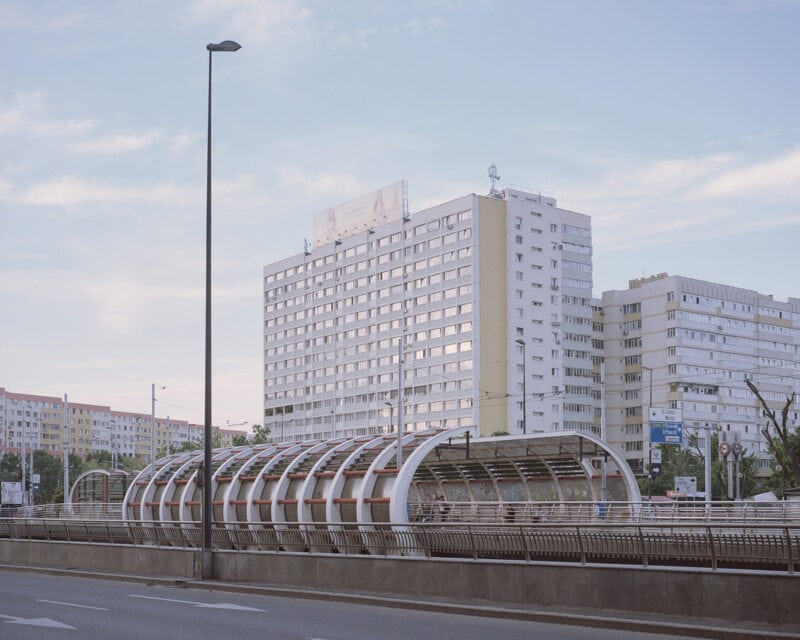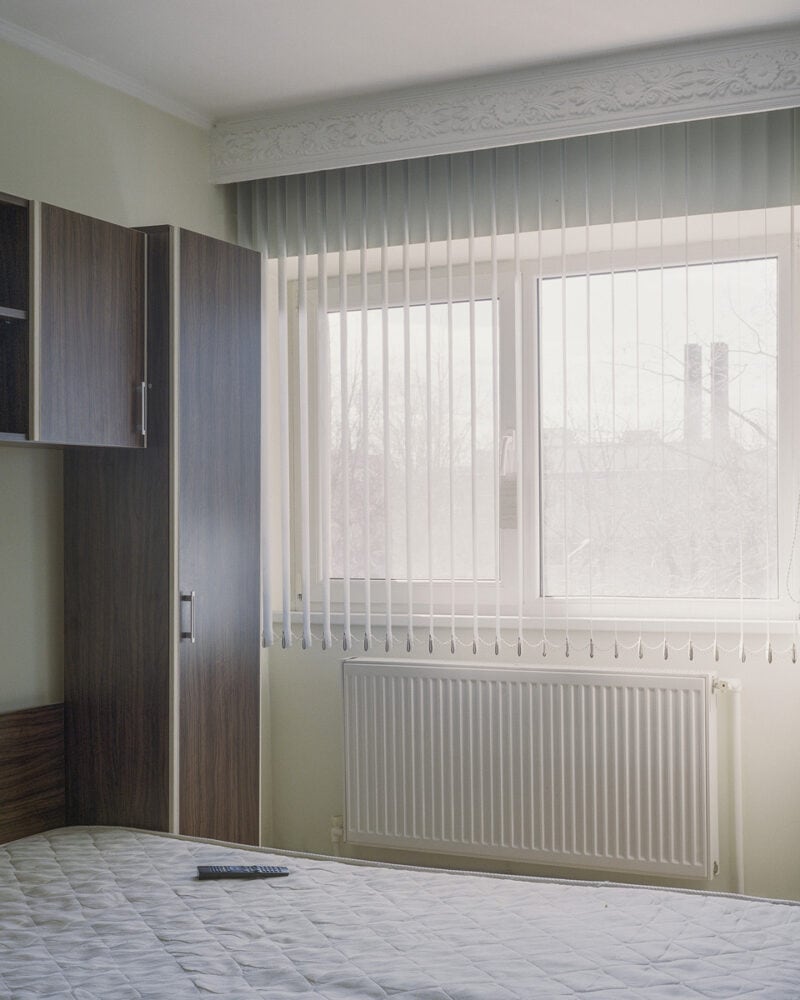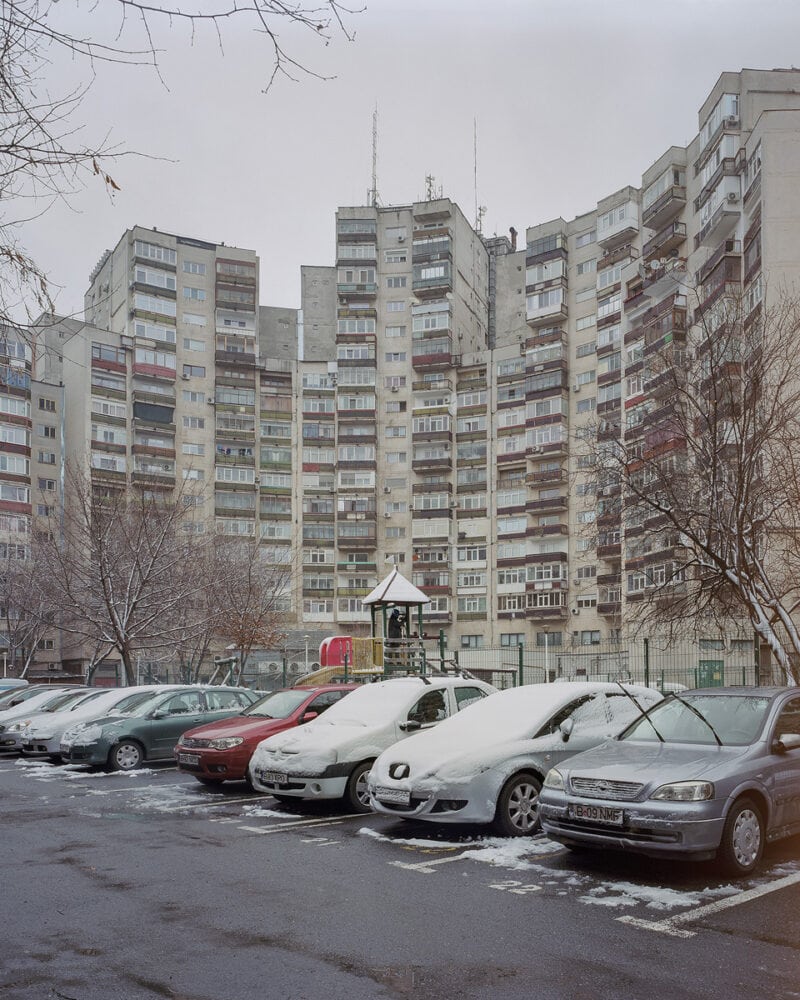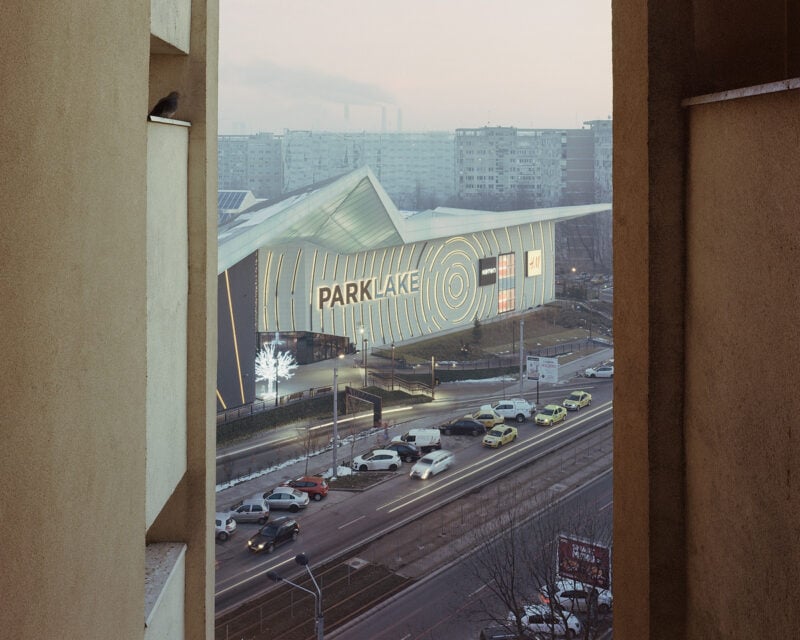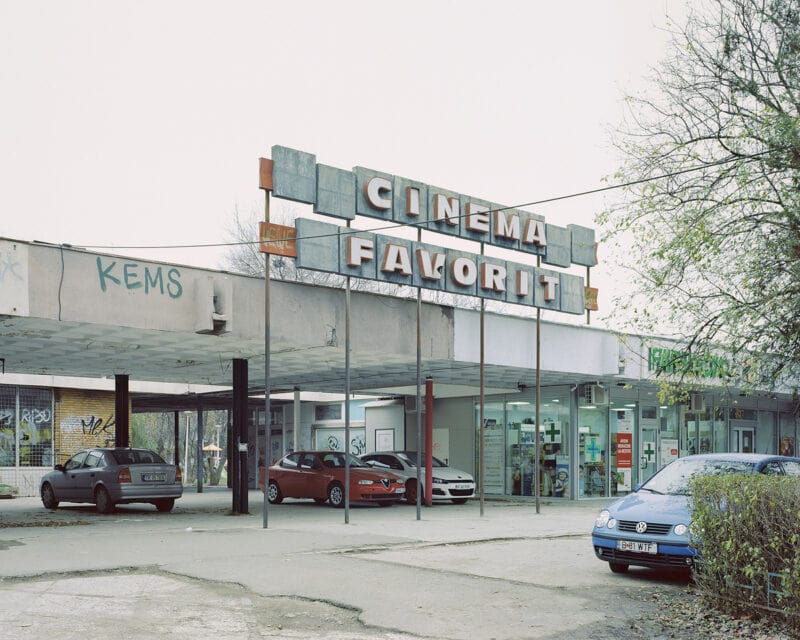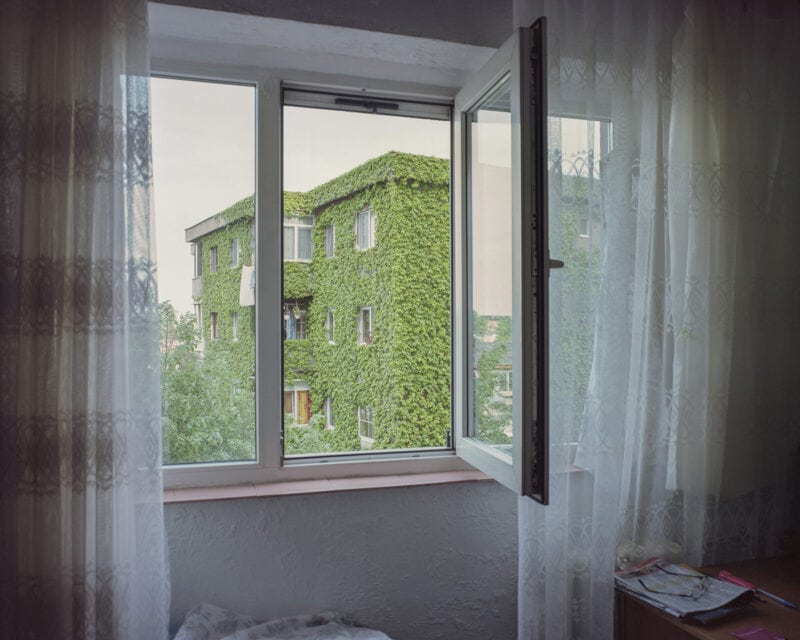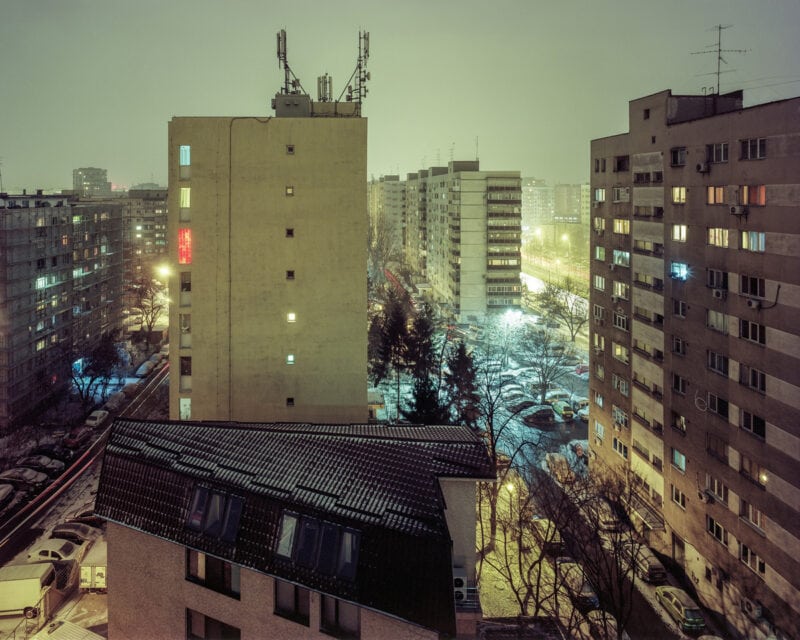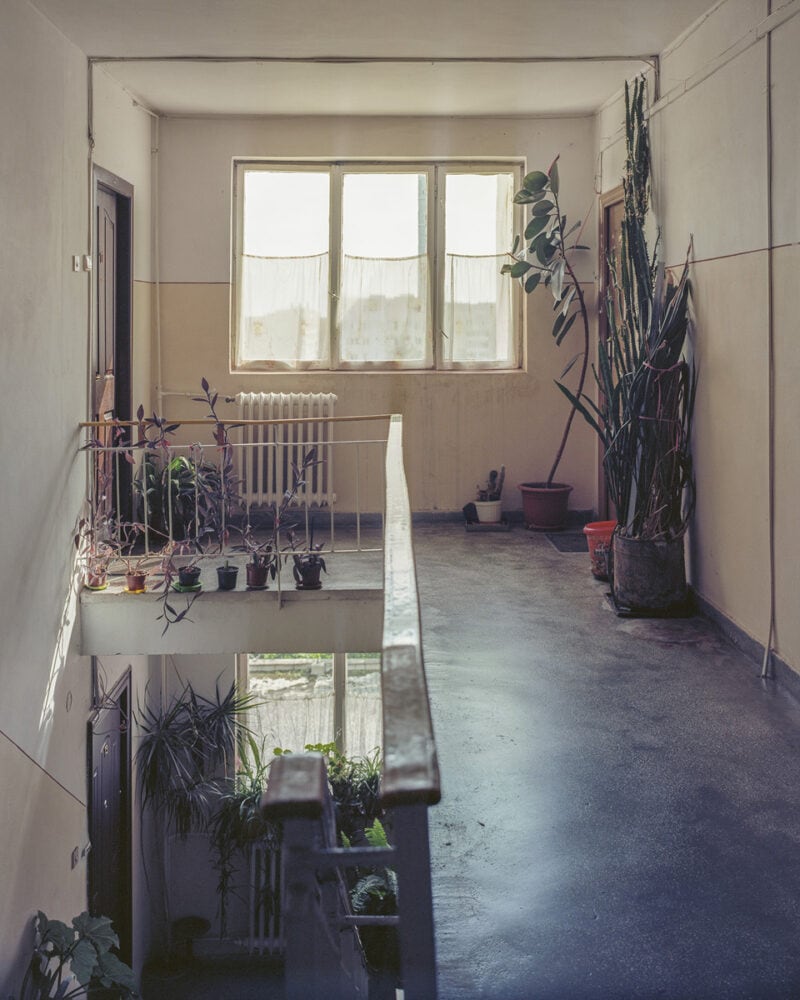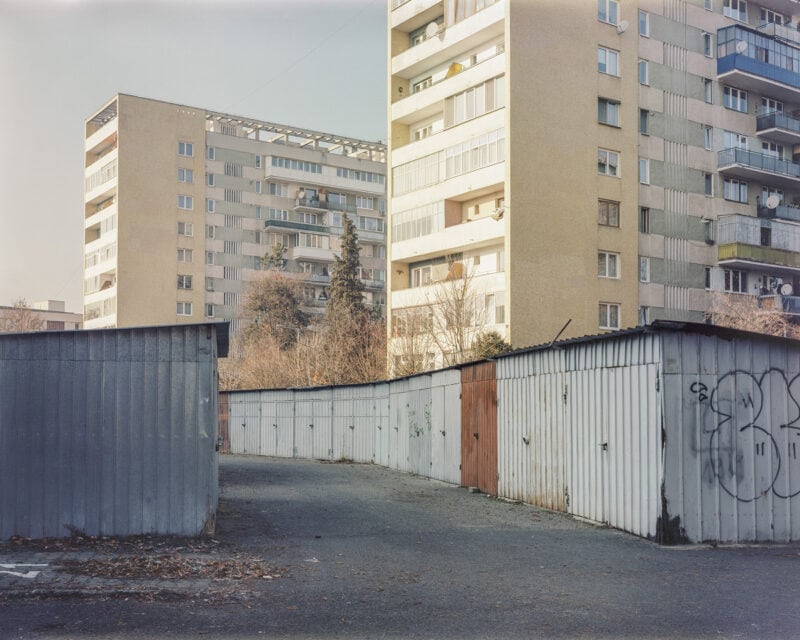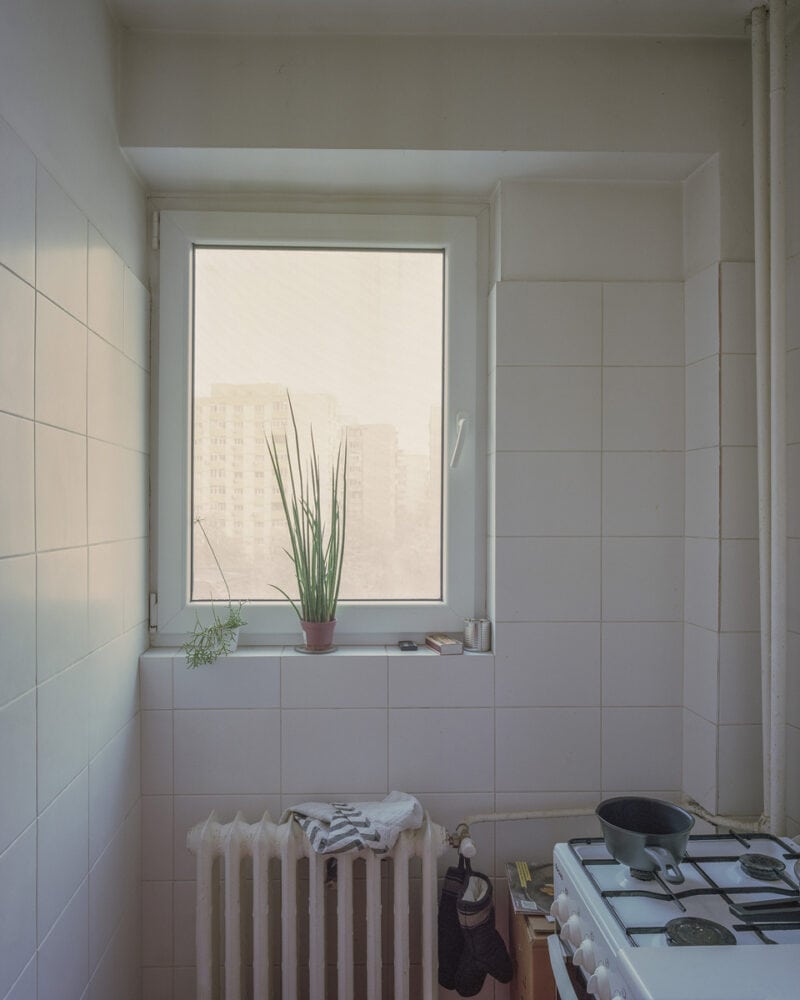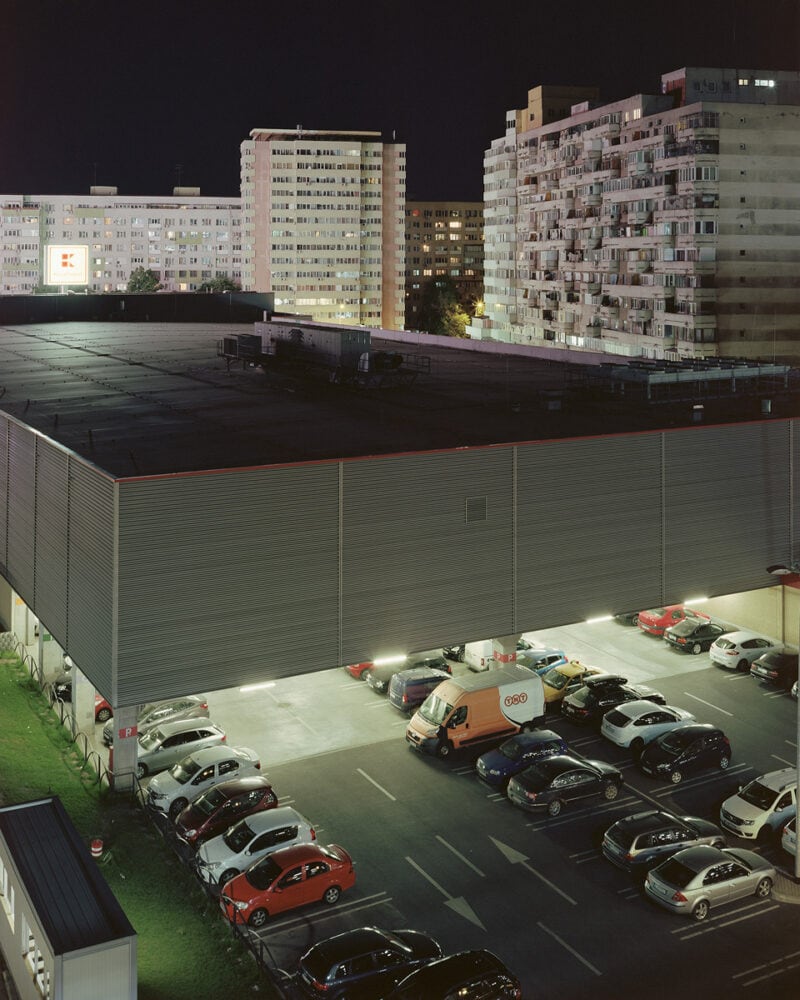Mihai Rotaru was born in 1988, Ploiești, Romania, currently based in Bucharest. Trained and working as an architect, he is focusing mainly on urban landscapes through the medium of documentary photography. His visual investigations aim to interrogate how architecture shapes the urban fabric and to what extent the built environment fulfills its inhabitants’ needs.
About Sleeping Districts – words by Mihai Rotaru:
Thirty years after the abolition of the Communist regime, Romania’s urban landscape is still largely dominated by typical communist housing developments. Originating from a Soviet housing model that gained rapid popularity in the East, these areas were built from scratch and populated with individuals coming from all over the country as part of an intensive urban development programme. Designed merely as a housing solution and having insufficient facilities to fulfill the demands of all their inhabitants, these areas were constructed so as to be populated in the evening by people who would then commute during daytime to work in factories in other parts of the city.
Nowadays, these neighborhoods are becoming outdated, their parking lots insufficient, their once neatly styled gardens have become home to rampant weeds, former cinemas have been left completely abandoned, and the local marketplaces are being replaced by foreign supermarket chains. Furthermore, within a short walk away from the buzzing Sleeping District a new large shopping mall has been erected, now replacing what once used to be a factory. Most of these flats were built following strict layouts with small, cramped rooms, thus imposing a certain living standard on their dwellers. Nonetheless, over the years, many of these homes have suffered changes in order to accommodate different needs and desires, with every owner or lodger leaving their own personal imprint on the space.
Using my personal experience of growing up inside these concrete ecosystems as a starting point, I am undergoing a visual investigation into how these so-called Sleeping Districts are aging and adapting to contemporary times. Still the most common type of dwelling amongst people of all classes and ages, these districts have now become an eclectic sight, with elements from their tumultuous past still in place and clashing with new developments.
